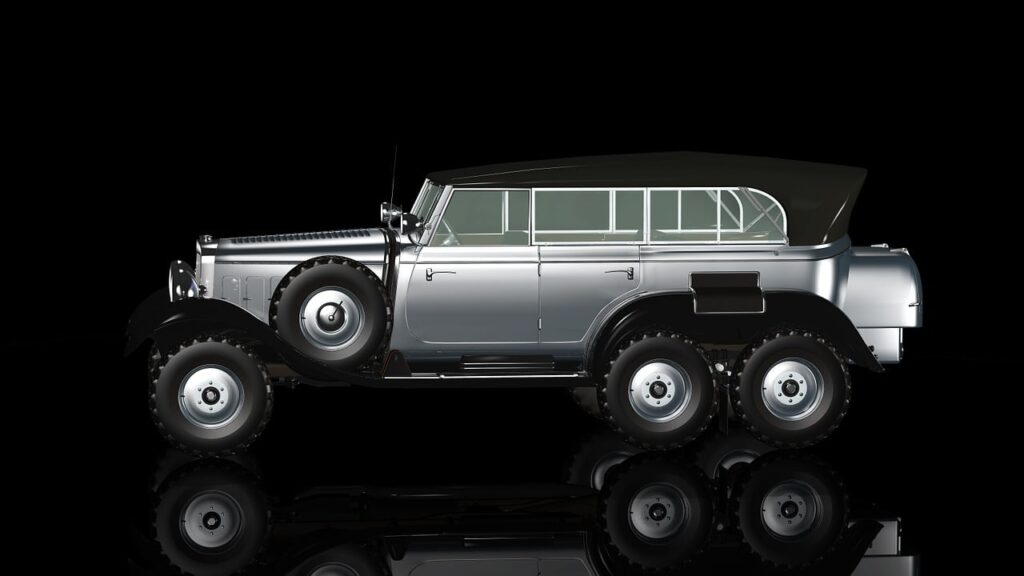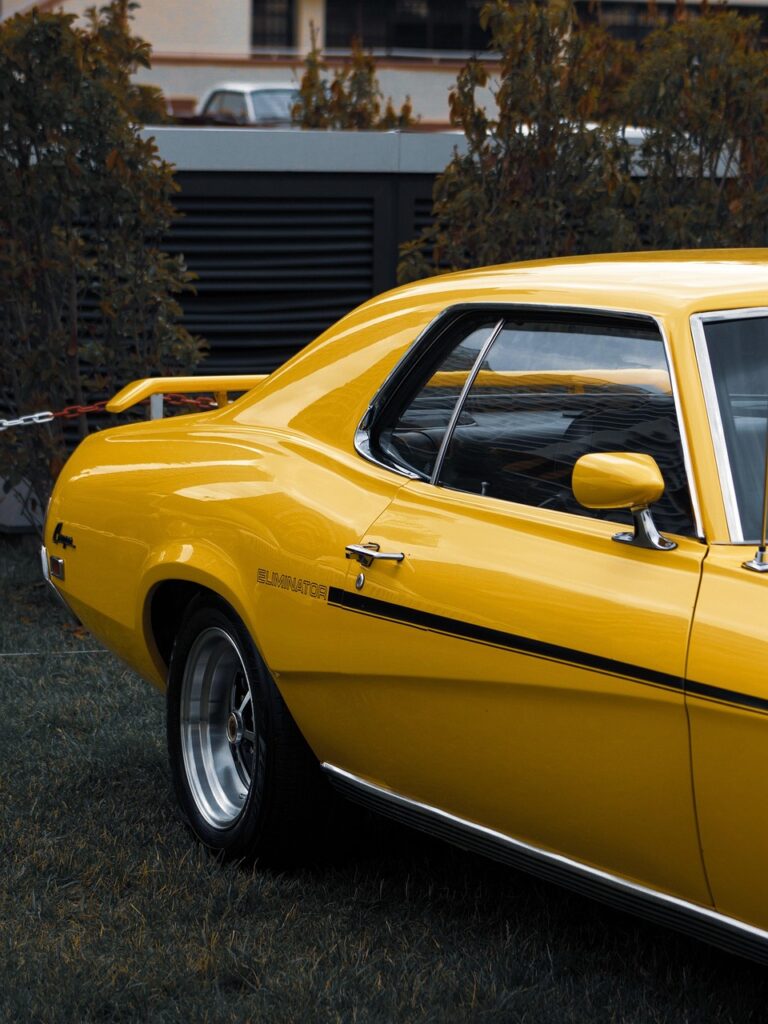
For decades, the automobile has stood as an undisputed emblem of American liberty, an extension of the pioneering spirit, promising escape, autonomy, and the boundless potential of the open road. From the romanticized journeys of Kerouac to cinematic narratives of self-discovery, the car has been deeply woven into the fabric of our national identity, embodying a particular vision of freedom that transcends mere transportation.
Yet, in recent times, the subtle undercurrents of automotive politics have erupted into overt ideological confrontations, transforming our vehicles from mere modes of transport into explicit declarations of belief. The auto industry, long argued to be inherently political, now finds itself at the epicenter of national debates, challenging enthusiasts and analysts alike to confront a reality far more extreme and less idyllic than once imagined. This shift forces a re-evaluation of not just what we drive, but what those choices signify in a deeply divided society.
This article delves into the intricate web of political ideologies, economic realities, and societal impacts that now define the automobile’s role in contemporary America. We will explore how presidential decrees, celebrity endorsements, localized policy battles, and profound philosophical questions converge on the asphalt, making every car and every purchasing decision a potential political statement.

1. **The Auto Industry: Inherently Political, Unavoidably So.**The assertion that the auto industry is inherently political is not new, but its veracity has become undeniably pronounced in recent years. Historically, enthusiasts often overlooked political dimensions, focusing on performance and engineering. However, this perspective, while understandable, has risked negative outcomes as political decisions can profoundly impact automotive hobbies and industries.
Examples abound where political actors, often lacking nuanced understanding, have imposed detrimental restrictions. Bans on imported cars or “unreasonable limits on aftermarket tuning” represent direct governmental intrusions into personal choices. These underscore that vehicle production, sale, and use are always subject to regulatory frameworks born from political processes and societal concerns.
What marks the current moment is the transformation from an *inherently* political industry to an *explicitly* political one, in a manner now deemed “unavoidable.” Where once political influences were subtle, they are now front and center, woven into national discourse. This means owning or discussing a car can now carry a clear ideological banner, making neutrality difficult.
This explicit politicization complicates the notion of cars as a unifying hobby, capable of bringing together people of “disparate views and backgrounds.” Vehicles that once served as common ground now stand as potential symbols of division, reflecting a broader “Balkanization of thought.” Navigating this landscape requires understanding how these machines transitioned from personal transports to public political declarations.

2. **Presidential Intervention: The Tesla Boycott and a “Show of Confidence.”**The automotive sector’s explicit politicization peaked recently with direct presidential intervention regarding Tesla. Following a challenging period in the markets, attributed partially to Chinese consumers and new competitors, the President declared a boycott against Tesla “illegal.” This swiftly elevated the company’s standing into a national political debate.
The President then publicly stated his intention to purchase a Tesla “as a show of confidence and support for Elon Musk.” Communicated via Truth Social, this move was framed as a direct counter to “Radical Left Lunatics” allegedly attempting to ” illegally and collusively boycott Tesla.” The President explicitly linked Musk’s efforts to the “MAKE AMERICA GREAT AGAIN” agenda, embedding the brand within a partisan narrative.
These remarks ignited a fierce debate on the legality of such boycotts. While property damage is illegal, consumers agreeing to boycott a company is generally considered free speech. This distinction is critical when a commercial entity is closely linked to a political figure, raising questions about protest versus vandalism.
This unusual presidential endorsement, especially given prior skepticism toward EVs from certain factions, highlights deep contradictions and strategic realignments in automotive politics. It signals a new era where presidential influence can directly impact brand perceptions and market dynamics, making a company’s fortunes a barometer of political loyalty and ideological struggle.
3. **The Ed Begley, Jr. Effect: Early EVs and Celebrity Endorsement.**The politicization of car ownership, particularly electric vehicles, has historical roots preceding current culture wars. Significant environmental shifts in the Clinton Era, with global warming as a primary concern, led to a renewed call for electric cars. This imbued EVs with a political significance they had largely lacked, finding champions, especially among certain celebrity circles.
General Motors responded with the GM EV1, an early electric vehicle that became a potent symbol of environmental commitment. This car was enthusiastically embraced by “celebrities of the lefty California green variety,” particularly as California was one of few places it could be leased. Actor Ed Begley, Jr. notably became a prominent face of Hollywood environmentalism, embodying the nascent movement for sustainable transportation.
Begley, Jr.’s deep connection to the EV1 was so profound that when GM controversially recalled and destroyed all vehicles, he famously hosted a “funeral for the car.” This powerful symbolic act underscored the emotional and ideological investment in early electric mobility. His dedication continued, as he advocated for various electric cars, solidifying his role as a consistent proponent of the technology.
Thus, when Tesla introduced its first Roadster, the company and Elon Musk garnered considerable support from this same environmental community. Begley, Jr.’s glowing endorsements, like calling his Model S the “best car I’ve ever owned” and driving it cross-country, demonstrated the continuity of this “Ed Begley, Jr. Effect.” This phenomenon illustrates how celebrity advocacy initially positioned EVs as a politically charged statement of values.

4. **Elon Musk’s Shifting Alliances: From Green Hero to Political Target.**The narrative surrounding Elon Musk and Tesla has dramatically transformed, moving from acclaim within environmental and progressive circles to becoming a flashpoint in contemporary political divides. Initially, Musk was heralded as a visionary, bringing electric vehicles mainstream with support from figures like Ed Begley, Jr. His early endeavors aligned with environmentally conscious ideologies.
However, a noticeable shift began as “plenty written about Elon Musk joining the Republican Party” emerged, introducing significant “cognitive dissonance.” This was challenging for those associating EVs with environmentalism, as a President “who seemed fairly anti-EV” was now embracing the world’s largest electric car manufacturer. This ideological pivot eroded Tesla’s goodwill within its original supporter base.
In recent weeks, this dissonance became “unavoidable,” culminating in “people have stopped buying Teslas for many reasons, but some of them are likely political.” The backlash escalated, with “Police now having to guard Tesla facilities” to avoid “vandalism that has turned Tesla facilities and owners into a target.” This indicates a tangible manifestation of political animosity.
Activists, including “unofficial Musk biographer Ed Niedermeyer,” spearheaded movements like the “#TeslaTakedown” hashtag, featuring “protests at Tesla service centers.” This concerted effort by “the ‘left'” to target Musk, whose companies benefit from “valuations far outsized to their actual earnings,” clearly positions Tesla and its CEO as central figures in an intense ideological battle.

5. **Congestion Pricing: From Local Policy to National Political Football.**Urban planning initiatives, especially those regulating traffic and generating revenue, often start as local debates. Yet, New York City’s “congestion pricing” swiftly transcended its municipal origins, morphing into a national political “football.” This plan, designed to charge an extra toll for drivers entering lower Manhattan, aimed to reduce vehicular trips and boost transit revenue. Initially controversial, its implementation revealed unexpected public acceptance.
Despite initial opposition, a new Siena College poll indicated a “dramatic turnaround,” with “42 percent of city residents” now approving of congestion pricing, up from “32 percent” previously. This local success, however, did not prevent it from becoming a target for national political figures, underscoring how pragmatic urban policies can be caught in broader ideological currents.
President Trump declared the plan “Dead,” while U.S. Transportation Secretary Sean Duffy strongly critiqued it as “a slap in the face to working class Americans and small business owners.” Duffy argued commuters already financed highways through gas taxes, and the toll left drivers “without any free highway alternative,” impacting working people and small businesses. This framed the policy as an elite imposition.
The national political pushback against congestion pricing, particularly from anti-regulatory figures, illustrates a curious paradox. Even when a policy achieves its local effects and garners local support, it can still be weaponized in a larger national political narrative. This highlights how deeply integrated automotive issues are within American political discourse, where traffic and tolls become proxies for wider debates about economic fairness and governmental overreach.

6. **The Broader EV Culture War: Ideology vs. Innovation.**Beyond the saga of Tesla and its CEO, electric vehicles have become a central battleground in America’s escalating “culture war.” What was once seen as technological advancement or environmental necessity now symbolizes ideological division. President Biden’s administration actively “pushing heavily for their adoption,” advocating EVs as beneficial, offering tax breaks, and investing in charging infrastructure.
Conversely, former President Trump and his allies adopt a vehemently oppositional stance. Trump famously declared that supporters of “all electric car lunacy” should “rot in Hell.” He promised regulatory restrictions to “block imports and protect American auto workers,” arguing EVs require less labor, potentially costing “tens of thousands of jobs.” This frames EV adoption as a threat to industry and employment.
This ideological clash manifests tangibly, even in driver behavior. “News reports of gas-vehicle drivers deliberately blocking off EV charging stations in what’s known as ‘ICEing'” illustrate antagonism rooted in this divide. These incidents reflect a visceral reaction, where objections to EVs seem “inherently illogical,” driven by a sentiment like “‘you take my emissions, you take my freedom.'”
The stakes in this “battle over EV adoption” are exceptionally high, with experts warning of the critical need to transition from gas-burning vehicles to meet climate goals. Yet, the debate has moved beyond scientific consensus, becoming deeply entrenched in partisan identity. Choosing an EV is no longer a simple consumer decision but a public affirmation of one’s political and environmental worldview.

7. **Automobility: The Illusion of Freedom and the Reality of Dependency.**For over a century, the car has been ingrained in the American psyche as the “ultimate symbol of freedom,” an emblem of individual autonomy and the ability to escape. This potent cultural mythology presents automobility as liberation. Yet, a deeper, more analytical perspective challenges this romanticized view, suggesting this perception of freedom is “the greatest illusion of our age,” masking profound and pervasive dependency.
Philosopher Isaiah Berlin’s distinction between negative and positive freedom offers a crucial lens. Negative freedom, “freedom from coercion,” aligns with the car’s promise: the freedom to drive where and when one chooses. However, without positive freedom—the “ability to live the life you choose”—this negative freedom can “quickly curdle into dependence,” paradoxically trapping individuals even as they feel liberated.
The reality of car ownership often contradicts the imaginative ideal of constant motion. While the “imaginative life of the car has it always in motion,” in truth, “over a billion vehicles sit idle at any given moment,” caught in garages, parking lots, or traffic jams. This stark contrast highlights how the freedom to drive often translates into the unfreedom of being “stuck,” whether financially, socially, or physically.
This dependency extends beyond mere convenience, imposing significant social and health burdens. Automobility “directly or indirectly causes one in 34 deaths annually, injures more than 100 million people a year,” and contributes to as many fatalities as both World Wars combined. Furthermore, cars are a “single largest source of rising emissions,” contributing to serious health issues and exacerbating climate change. The cherished symbol of freedom often delivers a hidden cost of debt, ill health, and vulnerability.
8. **The Economic Burden of Car Dependency: Beyond the Sticker Price.**For all its promises of liberation, automobility has, paradoxically, woven itself into the very fabric of America’s economic constraints. Far from merely being a cultural ideal, it has become a structural impediment, siphoning household wealth that could otherwise be directed towards entrepreneurial ventures or the fundamental aspiration of homeownership. This profound reliance on cars also perpetuates urban sprawl, a condition known to actively undermine productivity and ignite fierce political backlashes, ranging from France’s Yellow Vests to contentious toll road disputes across the United States.
Indeed, the initial sticker price of a new vehicle, now averaging nearly $50,000 in the U.S., or about $28,000 for a used one, represents only the bare surface of this economic entanglement. What many drivers consistently underestimate is the hidden cost—the recurrent expenditures on maintenance, fuel, insurance, parking, and inevitable repairs—which collectively can double the initial purchase price. This systemic underestimation means that individuals are often unaware of the full financial weight they carry.
Over the course of a lifetime, the cumulative expenses associated with merely staying on the road can easily ascend to ‘upwards of three-quarters of a million dollars.’ This staggering sum represents capital not invested in critical areas like housing equity, educational advancement, or securing a comfortable retirement. What ostensibly begins as a personal choice for mobility thus curdles into a pervasive form of ‘unfreedom smuggled in under the name of freedom,’ trapping individuals in a cycle of debt and diminished financial autonomy.

9. **Vehicle Choice as Political Identity: Decoding the American Driver.**Beyond their practical utility, vehicles in the United States have evolved into powerful, often unspoken, declarations of political identity, profoundly intertwining personal preferences with broader ideological leanings. The very act of choosing a car model or brand can resonate with deeply held beliefs, creating an overt, if sometimes subliminal, association between what one drives and one’s political stance. This phenomenon is not merely anecdotal but has been rigorously observed and documented, revealing clear patterns in a highly polarized nation.
Strategic Vision, a leading market research firm, undertook an insightful study prior to the 2020 presidential election, which definitively showcased the robust connection between political affiliations and automotive choices. Their findings indicated a pronounced statistical correlation: drivers of full-size pickup trucks, for instance, were markedly more inclined to cast their votes for Donald Trump. Conversely, the demographic comprising drivers of sedans, electric vehicles, and hybrids demonstrated a stronger propensity to support Joe Biden.
This study meticulously categorized the types of cars predominantly favored by each major political demographic. Republicans demonstrated a clear preference for robust vehicles such as heavy-duty pickup trucks, full-size utility vehicles, luxury SUVs, and standard pickup trucks. In stark contrast, Democrats gravitated towards categories like small APT cars, midsize APT cars, small multi-function cars, and, notably, were ‘more likely to drive hybrids or EVs.’ While there was ‘near-parity in smaller sub-segments of the market,’ the broader trends vividly underscored how vehicle choice has become an emblem of political allegiance, reflecting a deeper societal ‘Balkanization of thought’ now expressed through automotive preferences.
+Formula+Motorsport+Limited.jpg)
10. **Car Models and Party Lines: Specific Preferences Revealed.**Delving deeper than broad vehicle categories, the specific models chosen by American drivers further illuminate the intricate link between automotive preference and political identity. Strategic Vision’s comprehensive research not only established general trends but also identified particular cars that resonate strongly with different political demographics, including those without party affiliation but with distinct ideological leanings. These specific model choices reveal the granular distinctions in consumer behavior influenced by political worldview.
For Democrats and individuals identifying as liberals/progressives without party affiliation, a discernible pattern of preferences emerges, favoring models often associated with efficiency, environmental consciousness, or urban utility. The data highlights models such as the Honda Civic Sedan, Honda Accord Sedan, Subaru Forester, and Jeep Compass as popular choices among Democrats. Among liberals/progressives, the Tesla Model 3, Toyota RAV4 Hybrid, and Honda Civic Hatchback stood out, alongside vehicles like the Chevrolet Trax and Subaru Outback, underscoring a consistent leaning towards smaller, often more fuel-efficient, or technologically advanced options.
This stands in stark contrast to the preferences of Republicans and conservatives without party affiliation, whose choices largely gravitate towards vehicles embodying power, utility, and robust design. Republicans showed a strong inclination for models like the Ram 2500/3500, Ford F-150, GMC Sierra 1500, and Chevrolet Silverado 1500, reflecting a clear preference for heavy-duty and full-size pickup trucks. Conservatives, while sharing some overlap, also favored the Ford F-250/350, Ford Ranger, and the ubiquitous Jeep Wrangler Unlimited, demonstrating a consistent alignment with more traditionally rugged and powerful vehicles that often symbolize capability and independence, reinforcing how deeply embedded political leanings are in these seemingly simple purchasing decisions.

11. **Brand Loyalty and Political Affiliation: German Luxury to American Trucks.**The exploration of automotive preferences extends beyond vehicle types and specific models to the very brands that drivers choose, revealing yet another layer of political identity encoded in consumer behavior. The loyalty or inclination towards certain car brands has become an observable indicator of political affiliation, highlighting how deeply intertwined market choices are with broader societal divisions. This phenomenon spans the spectrum from luxury imports to quintessential American workhorses.
According to Alexander Edwards, President of Strategic Vision, a clear differentiation exists along partisan lines when it comes to brand allegiance. High-end European manufacturers like ‘Audi, BMW and Volvo are Democratic,’ suggesting a demographic that aligns with progressive values might favor these brands. Conversely, luxury brands such as ‘Cadillac, Land Rover, Lexus, and Lincoln are heavily Republican,’ indicating a preference among conservatives for these marques. Mercedes-Benz presents a more nuanced picture, with its buyers significantly skewing Republican, yet still attracting ‘a significant minority’ of Democrats, illustrating that some brands, while leaning, are not entirely monochromatic in their political appeal.
Interestingly, certain brands manage to bridge this political chasm, serving as common ground across the ideological divide. For example, brands like Jeep, Kia, Chrysler, and Genesis exhibit ‘an even split between the political parties,’ demonstrating a broader appeal that transcends partisan loyalties. Furthermore, the survey found that ‘import cars’ were a more popular choice among Democrats, with ‘71% of Democrats claiming to drive one,’ though imports still outnumbered domestics among Republicans (57%). Republicans, however, showed a notable endorsement of ‘Ford and GM cars by almost a two-to-one margin compared with Democrats, who preferred Honda and Toyota vehicles,’ cementing the notion that brand choice, too, acts as a subtle, yet powerful, political statement.
12. **The Practical Hurdles of EV Adoption: Beyond Ideological Battlegrounds.**While electric vehicles have become a significant battleground in the broader American culture war, their widespread adoption faces a host of practical challenges that extend beyond mere ideological divides. Despite the Biden administration’s vigorous efforts to promote EVs through tax breaks and charging infrastructure investments, the path to mainstream acceptance is fraught with significant hurdles. These concerns are not always rooted in partisan resistance but often in legitimate consumer apprehension regarding the logistics and economics of EV ownership.
Critics frequently cite several key disadvantages that deter potential buyers. EVs are generally perceived as ‘more expensive’ upfront, despite long-term savings on fuel. Concerns about ‘slow to recharge’ times and ‘smaller ranges,’ particularly under adverse conditions like ‘cold weather,’ contribute to what experts call ‘range anxiety,’ a major impediment to widespread adoption. Furthermore, the ‘spotty’ and insufficient charging infrastructure remains a significant point of contention, leaving drivers uncertain about convenience on longer journeys.
Real-world experiences highlight this dichotomy between policy push and practical reality. Darlene Wilson, an SUV driver who unexpectedly found herself in a Tesla rental, became an EV convert due to its ‘economical’ nature, recognizing it was ‘far cheaper than filling her SUV’s 20-gallon tank’—a purely economic decision, not a political one. Similarly, Tesla owner Topher Clark expressed frustration that protecting the Earth had become so ‘political,’ viewing his EV and solar panels as a ‘reasonable effort to reduce pollution.’ Yet, the ‘2023 study published by the journal Transportation Research found that about 25% of EV purchasers ultimately replaced them with a gas-powered vehicle,’ suggesting that for many, these practical hurdles outweigh the perceived benefits, pushing them back to traditional internal combustion engines.

13. **Global Competition and the Future of Manufacturing: The Tariff Factor.**The future of automotive manufacturing in the United States is inextricably linked to the complex dynamics of global competition, a landscape increasingly shaped by geopolitical tensions and protectionist trade policies, particularly concerning tariffs. The rapid rise of international players, especially from China, presents both an economic challenge and a political flashpoint, influencing domestic policy and consumer choice alike.
Industry groups, such as the National Automobile Dealers Association, have voiced concerns that the stringent new emissions standards issued by the Biden administration could inadvertently empower foreign competitors. They fear these regulations might ‘open the door for Chinese companies to leapfrog ahead of U.S.-based manufacturers.’ This anxiety is underscored by the reality that while many American-built EVs qualify for a $7,500 tax credit, numerous Chinese EVs are ‘significantly cheaper,’ with some bestsellers retailing for about $17,000—though largely unavailable in the U.S. due to a 25% tariff initially implemented by Trump and maintained by Biden.
The debate over manufacturing competitiveness extends to its impact on American jobs. The Trump-affiliated America First Policy Institute contends that the new emissions standards could result in ‘about 117,000 jobs’ lost, primarily because EVs require less labor to assemble, with Michigan being particularly vulnerable. This perspective contrasts with the United Auto Workers union’s endorsement of Biden, following his engagement with striking workers over concerns about lower wages in EV-focused plants compared to traditional gasoline-vehicle production lines. These tensions highlight the delicate balance between environmental goals, economic protectionism, and the well-being of the American workforce, making every policy decision a high-stakes play in a global game.

14. **Shifting Tides: Automakers Re-evaluating EV Commitments.**The ambitious push towards an all-electric automotive future, while heralded by policymakers and environmental advocates, has recently encountered a significant recalibration within the industry itself. In the past several months, many major automakers have scaled back their aggressive predictions for EV sales, a clear indicator that market demand, rather than political mandates alone, ultimately dictates the pace of transition. This re-evaluation reflects a pragmatic response to evolving consumer preferences and the economic realities of a nascent, albeit growing, market segment.
Concrete examples of this shifting strategy are becoming increasingly visible across the industry. Ford, for instance, announced in January that it would ‘halt one of two production lines for its F-150 Lightning EV pickup,’ and consequently, ‘move some of the workers to lines making gas-powered pickups.’ This decision is a powerful testament to the fact that manufacturers must remain responsive to current consumer demand, which, for many, still leans towards internal combustion engine vehicles, even amidst the environmental imperative to transition.
Industry organizations, including those representing truck stops, travel centers, and convenience stores—entities that sell approximately 90% of the nation’s gasoline—have articulated a preference for a ‘technology-neutral, market-oriented, consumer-focused policies.’ They argue that such an approach is the ‘fastest, most efficient way to lower carbon emissions’ and should encourage all fueling technologies to improve, rather than effectively mandating a single technology. This collective voice underscores the complex, multi-faceted challenge of transitioning away from traditional fuels, emphasizing that consumer choice, profitability for infrastructure providers, and market viability remain paramount in shaping the automotive landscape.
The American automobile, once a straightforward symbol of personal freedom, has undeniably transformed into a complex artifact, intricately woven into the fabric of political identity, economic dependency, and global competition. From the ideological skirmishes over electric vehicles to the subtle statements made by brand allegiance, our cars are now potent declarations in a perpetually unfolding national dialogue. The road ahead for automobility is not a simple, open highway, but a winding path shaped by individual choices, policy debates, and the ever-present push and pull of a deeply divided society, where every ride is, in some way, a political statement.






